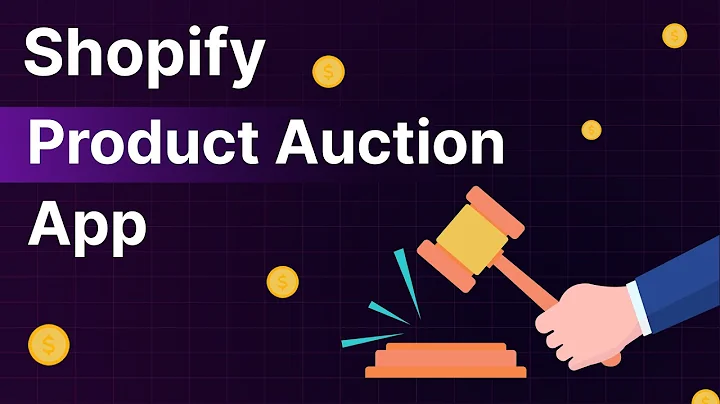Demystifying Tags, Metatags, and Hashtags in Shopify
Table of Contents
- Introduction
- Understanding Meta Tags and SEO
- The Role of Tags in Shopify
- Categorizing Products with Tags
- Using Tags for Dropdowns and Navigation
- Setting Up Customer Pricing with Tags
- Creating Private Pages with Tags
- Tracking Orders with Tags
- Using Tags in Blogs
- Conclusion
Understanding the Difference Between Tags and Meta Tags in Shopify
When it comes to building an online store with Shopify, there are a lot of different elements to consider. One of the most important aspects of any e-commerce site is search engine optimization (SEO), which can help your store rank higher in search engine results pages (SERPs) and drive more traffic to your site. However, there is often confusion around the difference between tags and meta tags in Shopify, and how they can be used to improve your SEO.
Understanding Meta Tags and SEO
Meta tags are pieces of code that are added to the HTML of your website, and are used to provide information to search engines about the content of your site. The two most important meta tags for SEO are the meta title and meta description. The meta title is the title of your page that appears in the SERPs, while the meta description is a brief summary of the content on your page.
When it comes to optimizing your site for search engines, it's important to ensure that your meta tags are well-written and contain relevant keywords. This can help your site rank higher in the SERPs and attract more traffic to your site.
The Role of Tags in Shopify
Tags, on the other hand, are used within Shopify to categorize products and group them together based on individual tags. While tags can be useful for organizing your products and making it easier for customers to find what they're looking for, they do not have a direct impact on your SEO.
However, there are still many ways that tags can be used to improve the functionality of your Shopify store. For example, tags can be used to create dropdown menus and navigation bars, set up customer pricing, create private pages, and track orders.
Categorizing Products with Tags
One of the most common uses of tags in Shopify is to categorize products. By adding tags to your products, you can make it easier for customers to find what they're looking for, and create a more organized and user-friendly shopping experience.
For example, if you sell clothing, you might use tags like "men's clothing," "women's clothing," "shoes," "accessories," and so on. This can help customers quickly find the products they're interested in, and can also help you track your inventory and sales more effectively.
Using Tags for Dropdowns and Navigation
Another way that tags can be used in Shopify is to create dropdown menus and navigation bars. By using tags to categorize your products, you can create a hierarchical navigation system that makes it easy for customers to find what they're looking for.
For example, you might create a dropdown menu that includes categories like "men's clothing," "women's clothing," and "accessories," and then use tags to further categorize each of these categories. This can help customers quickly find the products they're interested in, and can also help you track your inventory and sales more effectively.
Setting Up Customer Pricing with Tags
Tags can also be used to set up customer pricing in Shopify. For example, you might create a "wholesale" tag that is only visible to certain customers, and then offer these customers a discounted price on your products.
This can be a great way to incentivize repeat business and build customer loyalty, while also ensuring that you're still making a profit on your sales.
Creating Private Pages with Tags
Another way that tags can be used in Shopify is to create private pages that are only visible to certain customers. For example, you might create a "business" tag that is only visible to customers who have a business account with your store.
When these customers log in, they will be redirected to a private page that is tailored to their needs, such as a page with special deals or discounts that are only available to business customers.
Tracking Orders with Tags
Tags can also be used to track orders in Shopify. For example, you might add a tag to an order that indicates where the customer heard about your store, such as a magazine article or billboard advertisement.
This can help you track the effectiveness of your marketing efforts, and can also help you identify areas where you might need to improve your marketing strategy.
Using Tags in Blogs
Finally, tags can be used in Shopify blogs to categorize and organize your content. By adding tags to your blog posts, you can create a tag cloud that makes it easy for readers to find posts on specific topics.
For example, if you run a fashion blog, you might use tags like "trends," "style tips," "celebrity fashion," and so on. This can help readers quickly find the content they're interested in, and can also help you attract more traffic to your blog.
Conclusion
In conclusion, tags and meta tags are both important elements of any Shopify store, but they serve different purposes. While meta tags are used for SEO and can help your store rank higher in the SERPs, tags are used to categorize products, create dropdown menus and navigation bars, set up customer pricing, create private pages, track orders, and organize blog content.
By using tags effectively in your Shopify store, you can create a more organized and user-friendly shopping experience, while also improving your marketing efforts and driving more traffic to your site.


















